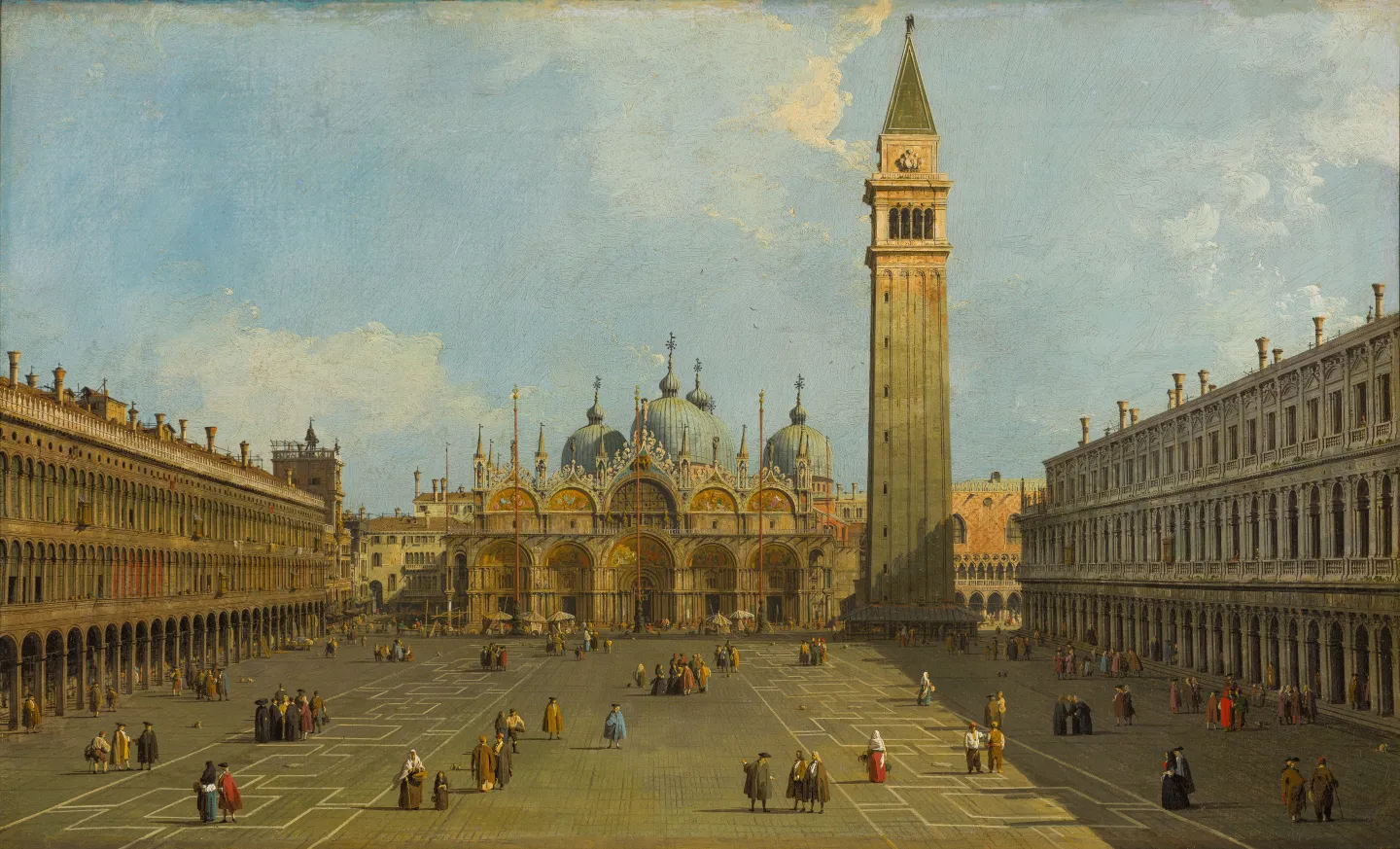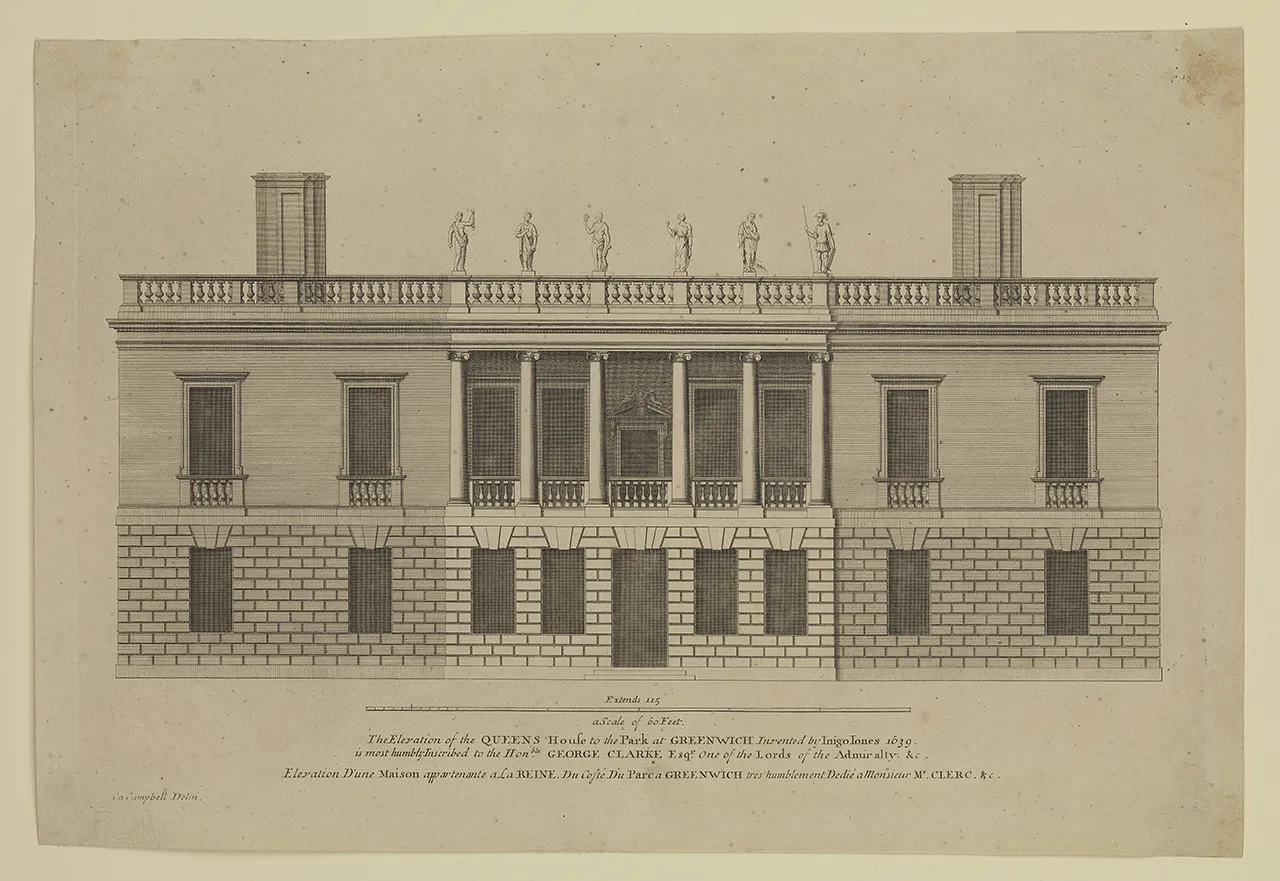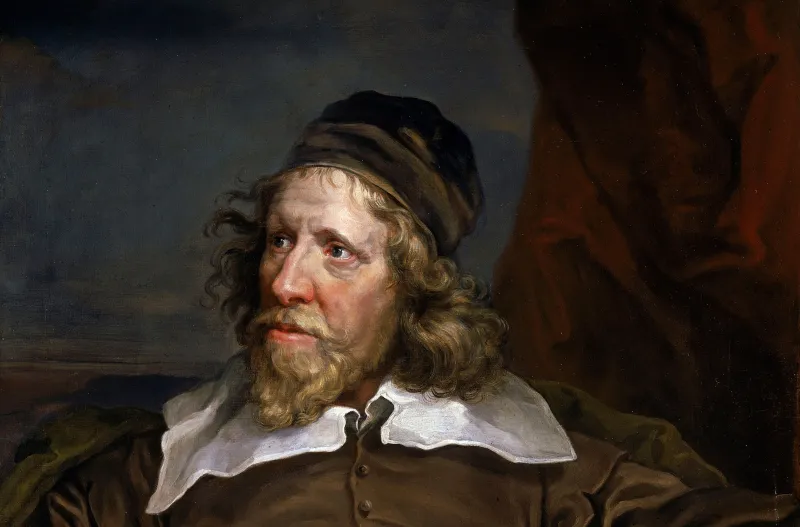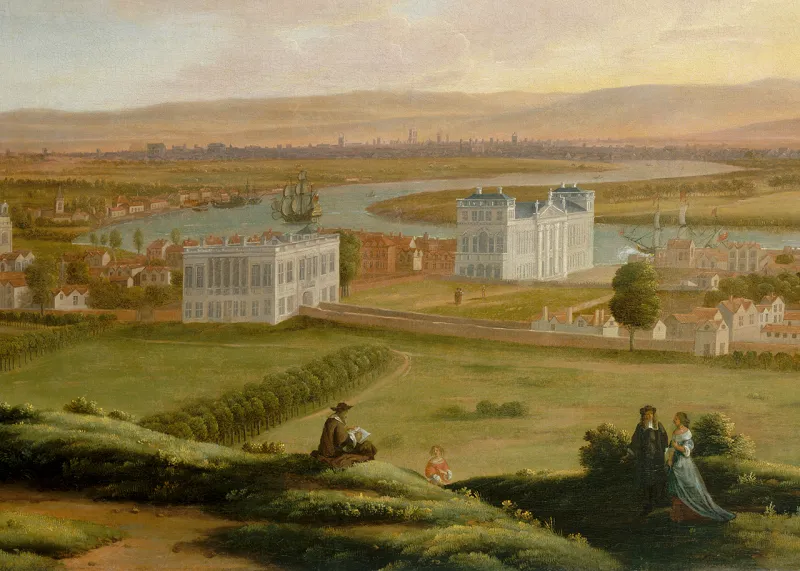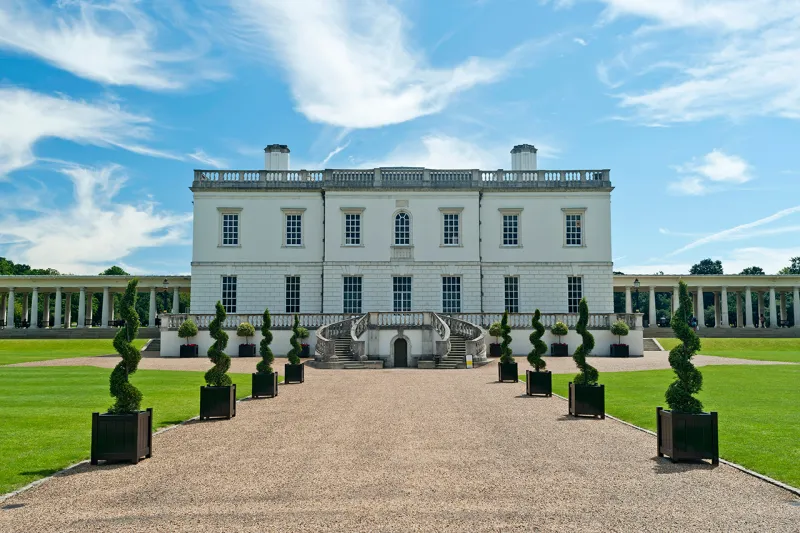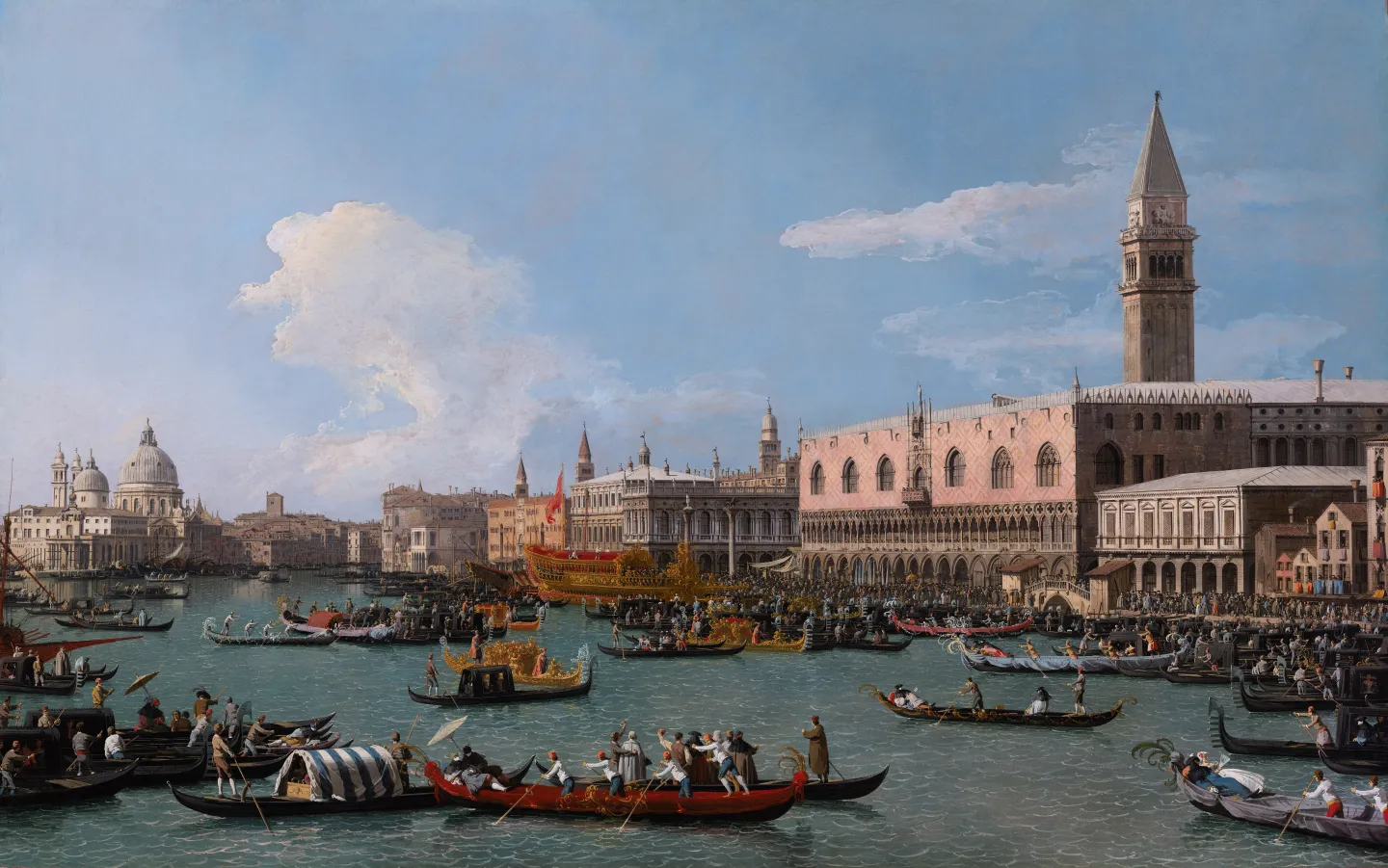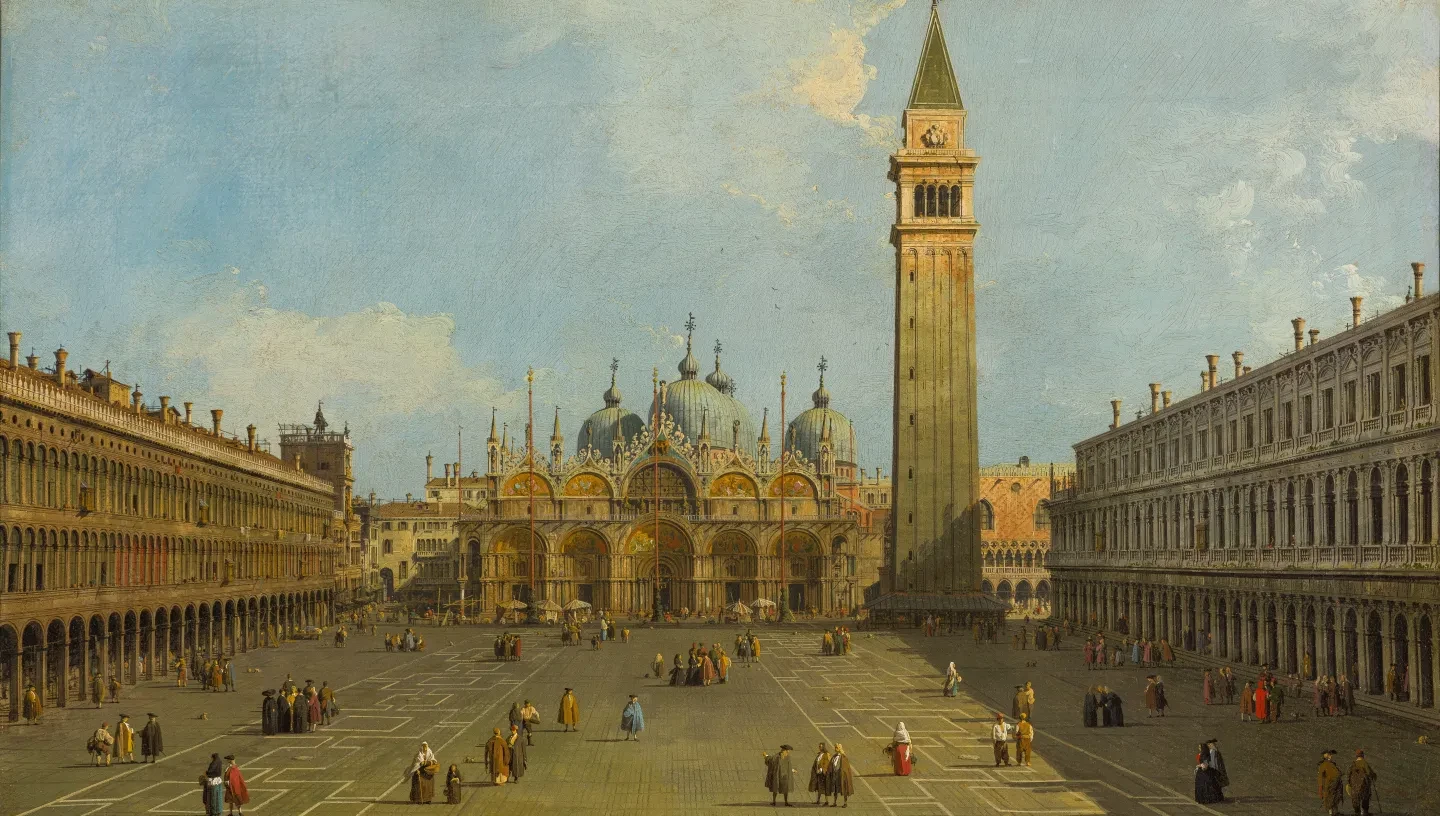
Art, antiquity and architecture: the Grand Tour provided an opportunity to discover the cultural wonders of Europe and beyond.
Popular throughout the 18th century, this extended journey was seen as a rite of passage for mainly young, aristocratic English men.
As well as marvelling at artistic masterpieces, Grand Tourists brought back souvenirs to commemorate and display their journeys at home.
One exceptional example formed the subject of a 2022 exhibition at the National Maritime Museum. Canaletto’s Venice Revisited brought together 24 of Canaletto’s Venetian views, commissioned in 1731 by Lord John Russell following his visit to Venice.
Find out more about this travel phenomenon – and uncover its rich cultural legacy.
The origins of the Grand Tour
The development of the Grand Tour dates back to the 16th century.
One of the earliest Grand Tourists was the architect Inigo Jones, who embarked on a tour of Italy in 1613-14 with his patron Thomas Howard, 14th Earl of Arundel.
Jones visited cities such as Parma, Venice and Rome. However, it was Naples that proved the high point of his travels.
Jones was particularly fascinated by the San Paolo Maggiore, describing the church as “one of the best things that I have ever seen.”
Jones’s time in Italy shaped his architectural style. In 1616, Jones was commissioned to design the Queen’s House in Greenwich for Queen Anne of Denmark, the wife of King James I. Completed in around 1636, the house was the first classical building in England.
The expression ‘Grand Tour’ itself comes from 17th century travel writer and Roman Catholic priest Richard Lassels, who used it in his guidebook The Voyage of Italy, published in 1670.
By the 18th century, the Grand Tour had reached its zenith. Despite Anglo-French wars in 1689-97 and 1702-13, this was a time of relative stability in Europe, which made travelling across the continent easier.
The Grand Tour route
For young English aristocrats, embarking on the Grand Tour was seen as an important rite of passage.
Accompanied by a tutor, a Grand Tourist’s route typically involved taking a ship across the English Channel before travelling in a carriage through France, stopping at Paris and other major cities.
Italy was also a popular destination thanks to the art and architecture of places such as Venice, Florence, Rome, Milan and Naples. More adventurous travellers ventured to Sicily or even sailed across to Greece. The average Grand Tour lasted for at least a year.
As Katherine Gazzard, Curator of Art at Royal Museums Greenwich explains, this extended journey marked the culmination of a Grand Tourist’s education.
“The Grand Tourists would have received an education that was grounded in the Classics,” she says. “During their travels to the continent, they would have seen classical ruins and read Latin and Greek texts. The Grand Tour was also an opportunity to take in more recent culture, such as Renaissance paintings, and see contemporary artists at work.”
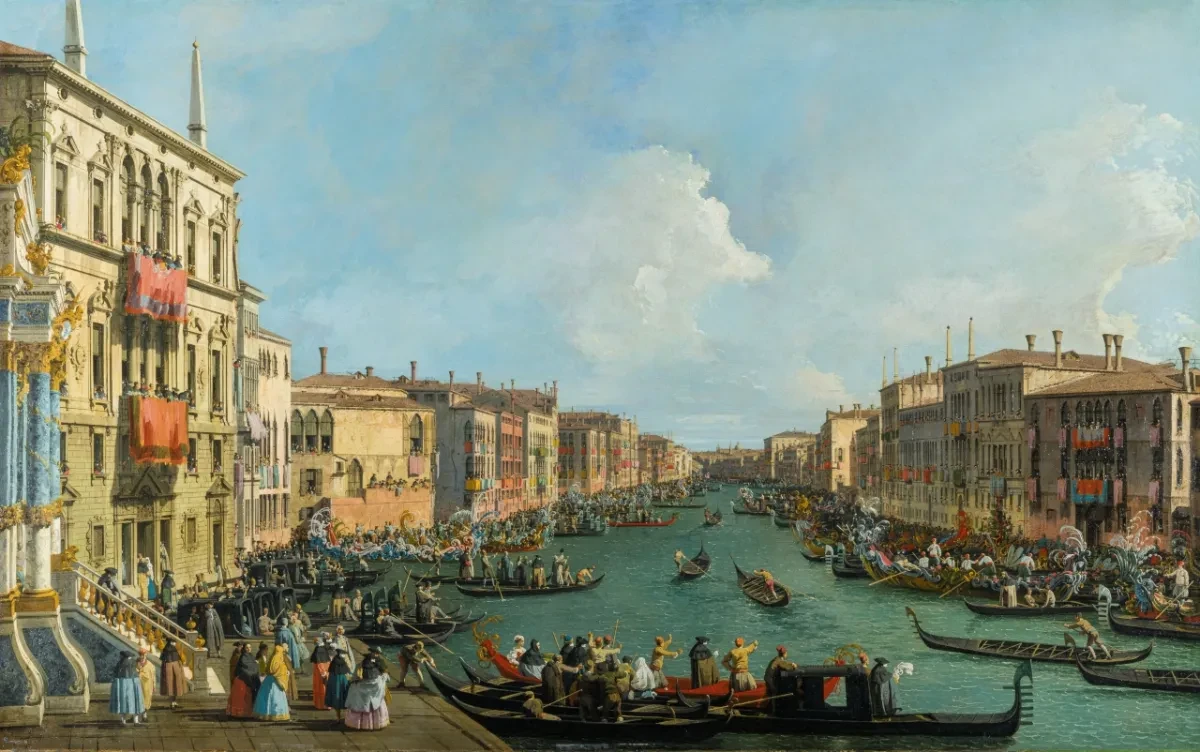
As well as educational opportunities, the Grand Tour was linked with independence. Places such as Venice were popular with pleasure seekers, boasting gambling houses and occasions for drinking and partying.
“On the Grand Tour, there’s a sense that travellers are gaining some of their independence and having a lesson in the ways of the world,” Gazzard explains. “For visitors to Venice, there were opportunities to behave beyond the social norms, with the masquerade and the carnival.”
Art and the Grand Tour
Bound up with the idea of independence was the need to collect souvenirs, which the Grand Tourists could display in their homes.
“The ownership of property was tied to status, so creating a material legacy was really important for the Grand Tourists in order to solidify their social standing amongst their peers,” says Gazzard. “They were looking to spend money and buy mementos to prove they went on the trip.”
The works of artists such as those of the 18th century view painter Giovanni Antonio Canal (known as Canaletto) were especially popular with Grand Tourists. Prized for their detail, Canaletto’s artworks captured the landmarks and scenes of everyday Venetian life, from festive scenes to bustling traffic on the Grand Canal.
In 1731, Lord John Russell, the future 4th Duke of Bedford, commissioned Canaletto to create 24 Venetian views following his visit to the city.
Lord John Russell is known to have paid at least £188 for the set – over five times the annual earnings of a skilled tradesperson at the time.
“Canaletto’s work was portable and collectible,” says Gazzard. “He adopted a smaller size for his canvases so they could be rolled up and shipped easily.”
These detailed works, now part of the world famous collection at Woburn Abbey, form the centrepiece of Canaletto’s Venice Revisited at the National Maritime Museum.
The legacy of the Grand Tour
The start of the French Revolution in 1789 marked the end of the Grand Tour. However, its legacy is still keenly felt.
The desire to explore and learn about different places and cultures through travel continues to endure. The legacy of the Grand Tour can also be seen in the artworks and objects that adorn the walls of stately homes and museums, and the many cultural influences that travellers brought back to Britain.
Main image: The Piazza San Marco looking towards the Basilica San Marco and the Campanile by Canaletto. From the Woburn Abbey Collection. Canaletto painting in body copy: Regatta on Grand Canal by Canaletto From the Woburn Abbey Collection
